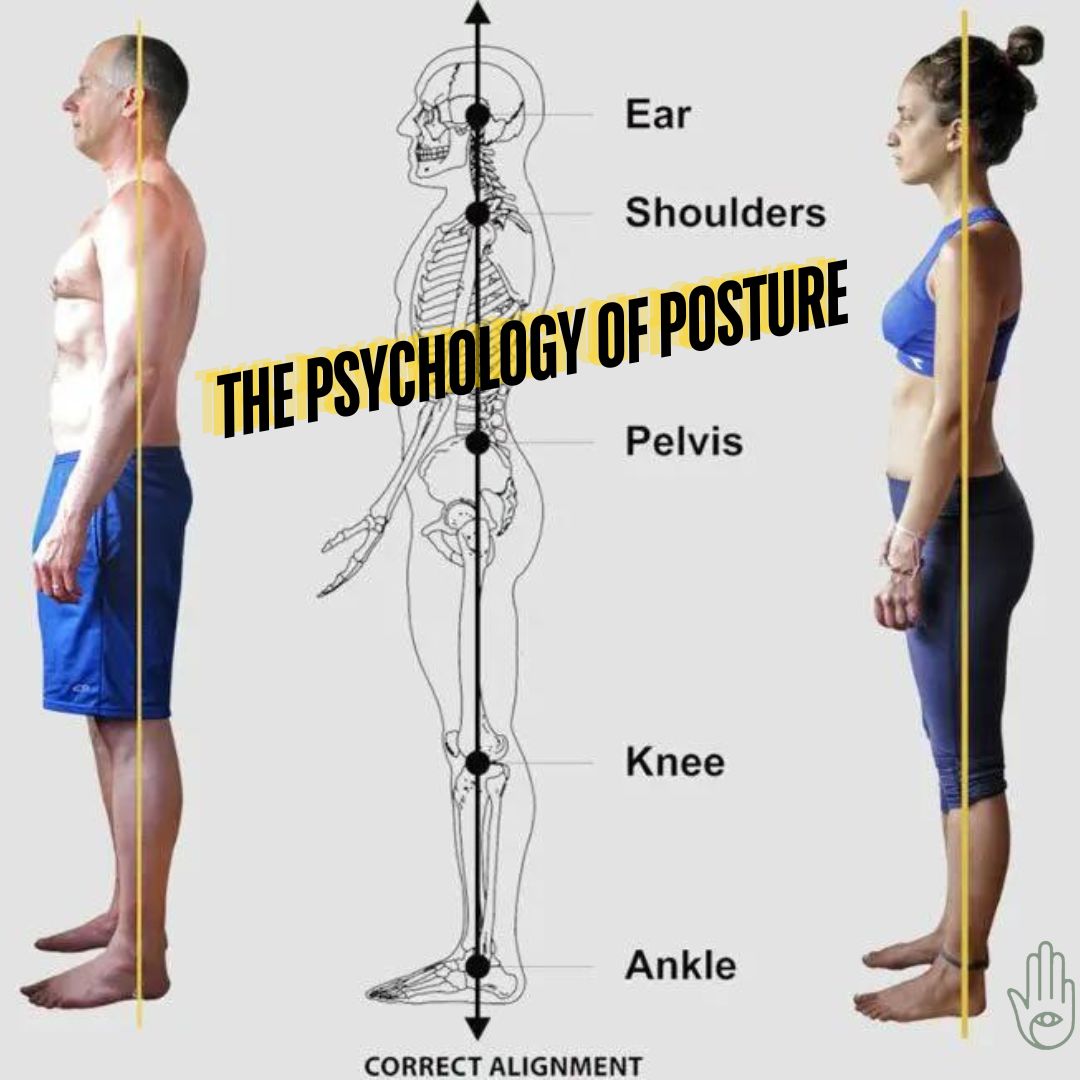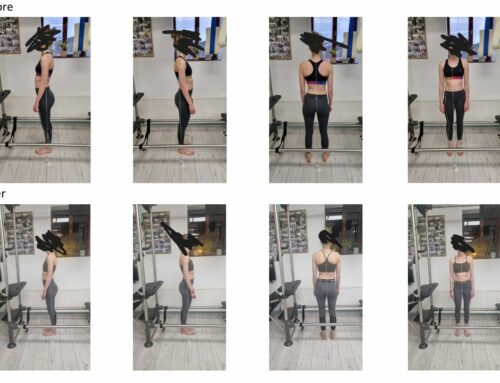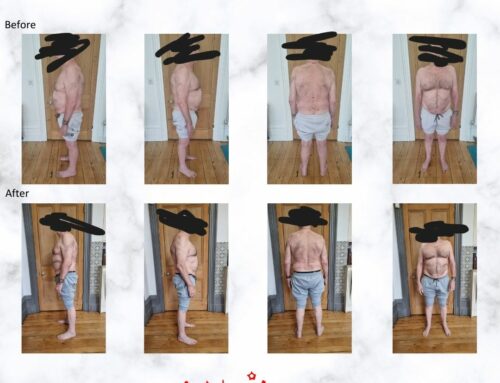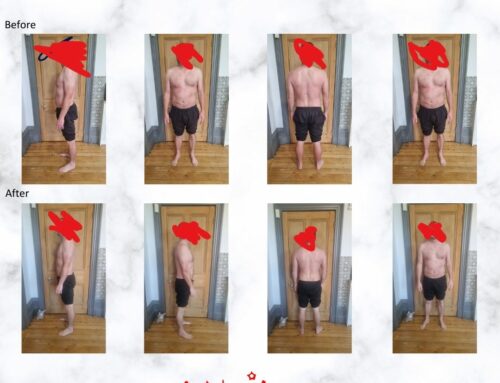Posture is a direct reflection of your mood. Having a upright tall posture helps us face the world with strength. We stand firm showing our vulnerability. When we are erect, we have more access to our hormones which in turn move on better pathways. The hormones serotonin and dopamine can be expressed better in the daily flow of life with energy.
Exercises and movement that focus on posterior chain plus shoulder girdle will delay aging. All movement are workouts for our mental and emotional health that helps us to show up better in the world.
5 tips for showing up in the world
- Be present
- Be clear
- Breathe efficiently
- Do corrective exercise
- Address your form
It is impossible to separate the mental emotions of the mind with our physical body. We wear our emotions in our bodies structure, thus contributing to our stance and posture. A 2017 Pub Med paper: ‘Pain and Psychology – A reciprocal relationship stated that depression is a predictor of chronic pain and those with chronic pain have an increased risk of developing depression.
Now not all stress is bad, we need to have stress in the body in order to survive. However an overload of stress as seen in The Paul Chek diagram below, means there is no plug for it to diffuse. It therefore creates an internal imbalance. This shows up in our hormones amongst other places. The hormone cortisol increases in our blood stream which signals pain and then we have a high rate of lactic acid meaning poor DOMS recovery. Lactic acid induces muscle soreness.

So, clients I have assessed have been sensitive, fragile and raw. High stress means we tighten and grip as we go into fight, flight and freeze. The challenge is to find homeostasis. Ho-me-o-sta-sis means that we have a steady equilibrium and conditions to sustain survival regardless of the outside world. The Physician Walter Cannon’s book released in 1930: ‘The wisdom of the body’ talked about the internal environment organisms and how it reacts and adapts to the external environment. The internal environment adapts, stabilises within an organisation of cells, tissues, organs and everything else. Our systems adapt to the environment based on the feedback loop. Lactic acid induces soreness which signals pain.
Our posture teams up with our wellness and productivity. I am well aware of the argument that posture, and pain have no corelation, but my personal experience comes form running studios and dealing with chronic pain clients for over 30 years. When we are slumped, it affects every system at a cellular and energetic level including digestion, breathing, circulation, muscular skeletal and the list goes on. When we reduce inflammation and balance hormones we actually start to lose weight in the right places
“A ruined planet cannot sustain human lives in good health. A healthy planet and healthy people are two sides of the same coin.” Dr.Margaret Chan
According a 2021 Chronic pain Lancet journal, pain longer than three months is categorised as Chronic. Chronic pain affects over 30% of the population. Chronic pain usually goes hand in hand depression, opioid use and in extreme cases suicide. The life expectancy of a chronic pain patient is drastically reduced.
Our modern hunched over position is killing us, resulting in mental health and muscular skeletal issues. Staying in a hunched position increases repetitive strain injuries like text neck from using the phone plus our doom scrolling on tiktok Things that result from this are poor jaw occlusion, neck, jaw and headaches. Learning to put small habits into our work life can embrace technology and protect our health. Pain always show up in order for us to change something.
A good method for office workers to get the most of the day is pomodoro technique. This technique encourages us to sit and focus for 25 minutes and then take a break for 5 minutes or longer. You continually use a timer for this. I also encourage a sit to stand desk or even sitting on a swiss ball and alternating this with a chair. When using a chair, try and scoot back in the seat and sit on the sit bones.
“Good upright posture is that from which a minimum muscular effort will move the body with equal ease in any desired direction”. Moshe Feldenkrais
We should move with ease and not discomfort, and upright posture has the least gravitational stress on the body. Hence flexibility and mobility drills are always essential prior to strength
Some of the emotional and physical response I have seen and also fall foul of myself can be seen below. The Stanley Keleman book emotional anatomy also depicts the emotion below the exterior surface.
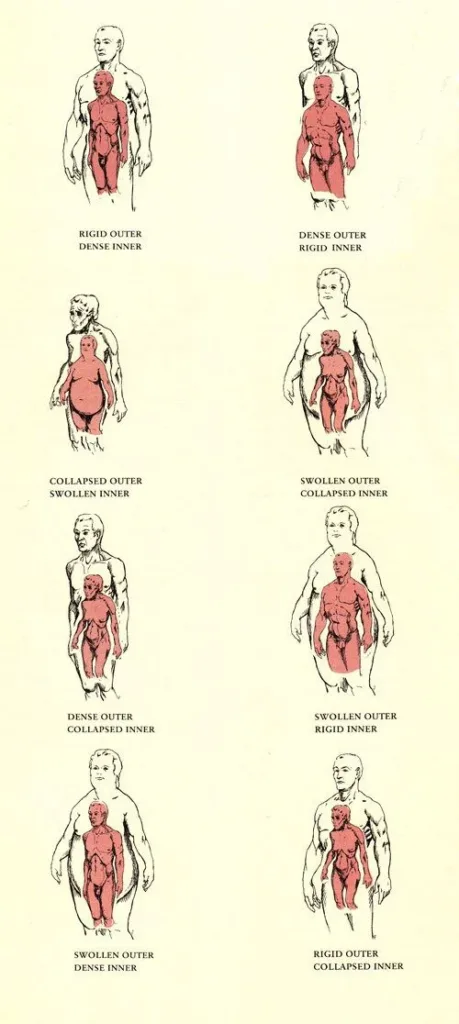
An upright efficiently functioning body should show the plumbline going through the following landmarks;
Earlobes
Shoulder
Hips
Knees
Feet
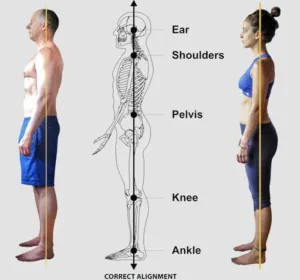
As soon as we fall off the vertical line, efficiency is depleted.
For example, mobilizing T4 and T5 in the thoracic vertebrae will help a forward’s head.
It is hard to break the fight or flight cycle, stress shows up emotionally with worry, fear, sadness, anxiety and depression. One of the major problems is poor sleep, a sleep depleted body is sympathetic stress.
The way we communicate with ourselves, and others is key. Expressing ourselves from a place of reflection rather than reaction can of affect our pain threshold.
“Healing severe or chronic pain, I believe, includes transforming our relationship to the pain and ultimately, it is about transforming our relationship to who we are and to life.” — Sarah Anne Shockley, The Pain Companion: Practical Tools for Living With & Moving Beyond Chronic Pain
What can you do at home???
Do your best to work on:
Your yin qualities – Nutrition, water and sleep
Your yang qualities – Movement, breathing, thinking
On a vibration and energetic level, our body is like an antenna and the more efficient it is, the better is can receive information form the outside world and process it.
Bibliography
Leigh Brandon podcasts
“The wisdom of the body” Walter Cannon
“Eat, move and be healthy” – Paul Chek
Troy Casey media

